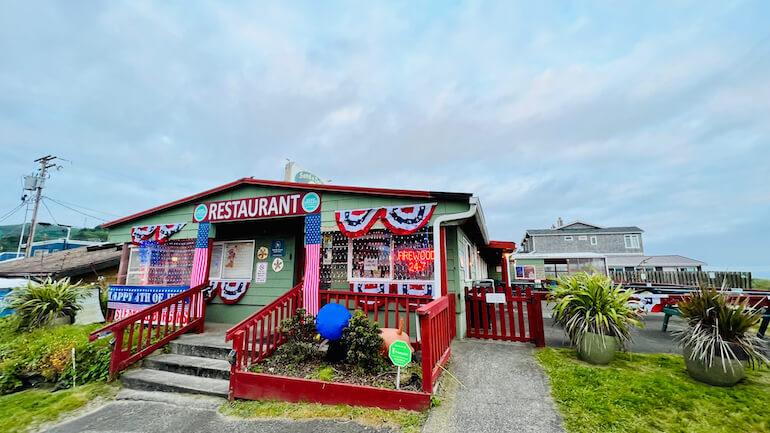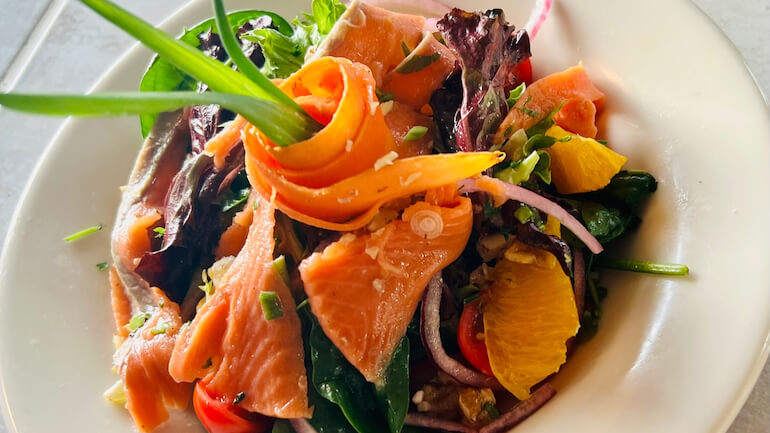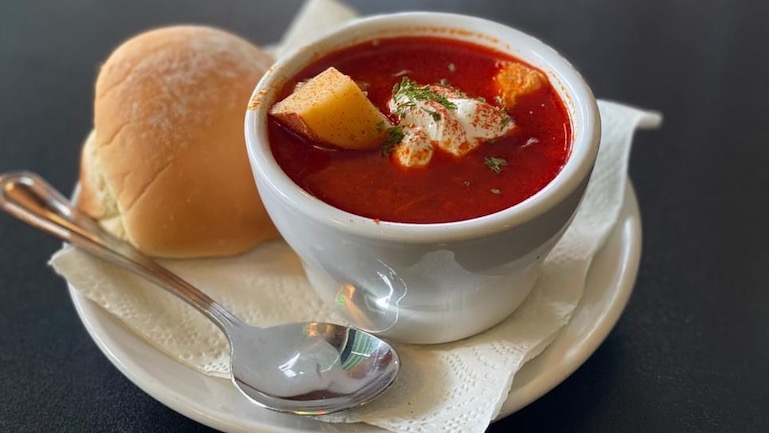Sand Dollar isn’t your average seasonal restaurant.
Founded by a mother and daughter duo, Emma Heathershaw and Maia Heathershaw Bradescu, Sand Dollar Restaurant & Lounge is a beachfront restaurant located in a small tourist town called Rockaway Beach, just off the Oregon Coast.

They’ve run this booming seasonal spot for eight years now and it’s not just the patio that faces 150 feet of open ocean that makes it a summer favorite. Travelers also come because “the foods are different from anywhere else,” Emma explains.
Sand Dollar serves traditional American food with a fine European twist – specifically Hungarian, Romanian, Serbian, and Bulgarian influences. “The restaurant uses proprietary house seasoning, and also seafood seasoning. The fries have a mix of salt, pepper, and paprika, among other things,” Emma comments, “It’s not a spicy blend, but sweet and savory.”
But while the delicious food may keep guests coming back again and again, it takes a lot of effort for seasonal restaurants to stay in business and thrive.
Riding the Supply Chain Rollercoaster
Seasonal restaurants, like Sand Dollar, are faced with significant challenges when it comes to the supply chain and the fluctuating cost of goods. While the restaurant is able to get all of the ingredients they need, the cost is a different story.
“We have to pretty much watch every single day, every single invoice, and adjust anything on the spot,” says Emma. “There’s been times where we’ve adjusted menu pricing almost every other month.”
Regardless of the cost of goods being an absolute roller coaster, Emma and Maia never lost hope that they’d be able to mitigate the impact on the guest experience, even with a little pushback from customers when prices went up.

Listening to What Customers Want and Making Menu Changes on the Fly
With major price fluctuations and a customer base with high expectations, Emma and Maia realized technology might be the solution to their most pressing challenges.
Being a family-owned business, Emma and Maia always talk about work and how to improve business, even on their daily commutes. One of their main business goals is to make work easier to manage by improving communications among both staff and customers, especially in the midst of changing menu prices. With these goals in mind, they ultimately settled on TouchBistro as an all-in-one POS solution for their seasonal restaurant.
“If changes need to be made right away, we have, you know, a cloud POS,” Maia says. “We can adjust anything on the spot, and there’s nobody we have to call to get that done for us.”
Rather than having to rewrite their menu from scratch, Emma and Maia simply adjust their menu items and prices as needed, directly in the POS. They can do this frequently as they need to, whether that’s monthly, weekly, or even daily.
By learning from each other and leveraging technology, the seasonal restaurant has managed to navigate fluctuating ingredient costs with ease. Sand Dollar has also been able to keep guests satisfied by not only being transparent about their pricing but also by listening to guest suggestions and updating their menu accordingly.
“I think the most important thing, is to never brush anything off.” Maia advises restaurateurs. “We know our food is good. No matter what we cook here in the restaurant… However, we need to hear from the customers what they want.”
And with the help of TouchBistro POS, Emma and Maia are able to run a lot of specials for foods recommended by tourists and the local community, right when they want them. “When they ask for more seafood, we provide them with more seafood. When they ask for a steak, we put the steak on special.” Emma explains.

When Your Guests Are on Vacation, Every Meal Counts
With a POS that allows Sand Dollar to update food and drink menus in seconds, the restaurant has been able to introduce specials and highlight promotions that increase sales. These features have also made it easier for staff to see the updated menu changes directly in the POS so they know what they can offer customers in real-time and provide suggestions on the spot.
This is especially important when guests don’t want to make a decision. “People really just want to be treated – they’re on vacation and they don’t want to think,” Maia says. “They’re stressed out about their five-year-old having a meltdown, or us not having chicken strips, or whatever. So you gotta find creative ways that are positive to mitigate that issue for them.”
And by highlighting promotions or suggesting specific items, Sand Dollar has created a relaxed atmosphere where customers feel supported. Locals and tourists keep coming back to dine because they know that they will always get a good meal, good service, and a good drink to go with it.
And the seasonal restaurant’s commitment to open communication and constant improvement has only led to a positive team environment. Despite the industry-wide labor shortages that have plagued restaurants throughout the pandemic, Sand Dollar was able to keep its core staff and also hire several college students that return to work every single summer – sometimes four or five in a row.
“Find people that know what you want…that you can depend on.” Maia advises all restaurateurs. “Create a team before you start.”
Sign up for our free weekly TouchBistro Newsletter







